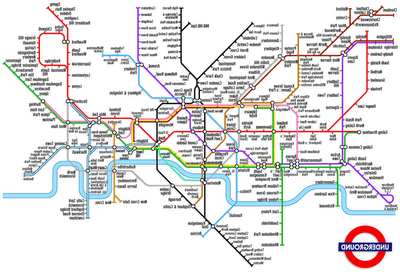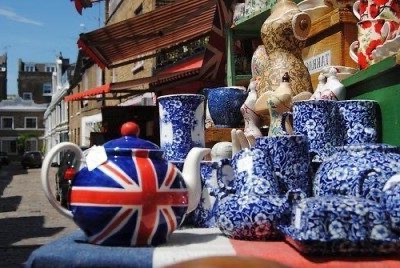Coffee in London, not always a mirage, not always a bet, here are five places where you can have a good cup of coffee in London.
Last year at Easter I accompanied a group of people to London who set foot for the first time in the English capital: my parents and two couples of their friends. In addition to having to show the city in three days, I had another goal: to convince my traveling companions that in London you can drink some good coffee. It may seem like a small thing, but when in the group there are those in every Starbucks, Costa Coffee or Caffè Nero who want to come in for a frappuccino or a tall latte, then it is clear that it is in all respects a mission impossible.
I probably haven't convinced everyone, but I know for sure that some of my traveling companions have returned home with the belief that there are places in London where coffee is not only acceptable, but even good.

Royal Organic, Craven Terrace
It is a place that goes unnoticed: one of those places that in six months could have been dismantled to make room for a hairdresser. I happened upon it by chance, walking towards the subway stop Lancaster Gate. One morning in the hotel I had ordered tea for breakfast: I hadn't had the usual coffee that I'm used to drinking every morning, so I felt like I wasn't fully awake. I remember seeing the sign with the writing Illy crossing Craven Hill: I thought of a mirage caused by caffeine withdrawal, but it wasn't like that. The square red sign was that of Royal Organic, a tiny place stuck almost by mistake between a dog grooming shop and a church. To enter you have to juggle between the fruit and vegetable boxes displayed on the sidewalk and the gate that shelters the stairs leading to the basement. The interior looks like a grocery store, with shelves on which bottles, biscuits, cereals and pasta are displayed. There is also a small showcase with the desserts: cakes, cupcakes, croissants and pain au chocolat. There is no seating except the counter along the narrow display case, with four sacrificed stools. Those lucky enough to find a place, or the patience to wait, will be rewarded with a dark and short coffee, served in one of those old brown ceramic cups. The only downside? Every time I go to London I am afraid I will pass the Royal Organic and discover that it no longer exists.

Monmouth Coffee, Borough Market
Once you get out of the subway station London Bridge we proceed further Borough Market, until you get to Park Street. We are in Southwark, an area famous - as well as for the food market - for The Shard, the splinter-shaped glass palace. Our destination is Monmouth Coffee, where I dragged my fellow travelers, who wanted to go to Starbucks instead. It is not easy to find a free spot in Monmouth. The windows are always open, regardless of the temperature and the season, and there is always a queue outside: those who want to order a coffee to drink before arriving at the office, those who hope to find a place at one of the raw wooden tables inside . We are not in a hurry, so while we wait for a table to become free we observe the place around us: the exposed bricks, the essential furniture, in post-industrial style, the crates full of coffee to grind. We also order some pain au chocolat and raisin bread along with the espresso cups. The Monmouth Coffee philosophy is that it is mainly served single origin coffee single plantation: that of the day comes from grains grown in the Granja Esperanza in Colombia. In addition to my parents, two of the four traveling companions also admit that the quality is far superior to that of the coffee they drank a couple of hours earlier in an international chain.

Books for Cooks, Blenheim Crescent
"The best cup of coffee in Notting Hill" is how this Blenheim Crescent bookstore is often described, just a stone's throw from P. It is immediately clear that Books for Cooks is not the usual bookshop nor the usual café: beyond the entrance lies a world made of high-ceilinged shelves full of books, of tables that almost seem to give way under the weight of the volumes, of leather sofas with a worn look. What attracts the most attention is the kitchen at the back of the shop, just where you would expect to find the counter with the cashier. But no: the tiny bookstore that on Saturday mornings is filled with people who have decided to take a break from the chaos of Portobello Market, houses a corner with a few tables and an open kitchen. Here a couple of chefs prepare the dishes inspired by book recipes for sale in the shop. The menu changes daily: so if in the morning you can enjoy a cup of American coffee together with the chocolate cake, in the afternoon the same coffee can be accompanied by a slice of focaccia with olives. It would be an understatement to call this place just a bar or just a specialized bookstore: Books for Cooks is both, thanks to the owners who have been able to brilliantly combine the two. To realize this, just move to a more famous street, such as Oxford Street or Piccadilly, to find multi-storey megastore bookstores where you can drink coffee and eat industrial scones at the stools of a bar of some international chain. Books for Cooks is instead a welcoming place where culture meets pleasure. Last detail: it is located right in front of The Notting Hill Bookshop, the bookshop that inspired the film Notting Hill.

Paul Rhodes, King William Walk, Greenwich
It takes at least half a day to savor this cup of coffee, but the destination is worth a trip out of town. From Bank station take the DLR, the Docklands Light Railway, to the stop Cutty Sark, in Greenwich. We went there on Easter Sunday: it was sunny and the temperature was mild, so we walked calmly until Greenwhich pier, past the museum ship Cutty Sark. From here we walked the half mile through Greenwich Park to Royal Observatory, where the meridian zero. The view is spectacular, with the City and the River Thames just in front. Back to the station, after a stop at Greenwich Market, we began to feel the need for the second coffee of the morning. In these cases my mother, a real coffee addicted, begins to feel withdrawal symptoms, becoming a caffeine hound. So, while our traveling companions had decided to visit the museum ship, we found ourselves at Paul Rhodes, a small bakery that also serves hot drinks. The long and narrow room is occupied for the most part by the counter where the products are displayed: by the bread made with mother yeast, the famous chocolate tart, scones, sandwiches and takeaway quiches. The seats are few: just a couple of tables and a few stools at the counter along the window. We had to wait a while, but the coffees and hot cross buns served over Easter were great.

Carpus, Piccadilly
From Carpo you can get there with your eyes closed: just follow the aroma of the coffee that is already felt half a mile away. We discovered it by chance, after a walk that gives Buckingham Palace it had brought us through Green Park and, from here, on Piccadilly. We were waiting for our dinner reservation time to arrive in a restaurant in nearby Swallow Street and, thanks to my mother's nose, we ended up in front of Carpo, discovering a place where large bags full of coffee beans from Colombia, Ethiopia and New Guinea. It is also a paradise for lovers of chocolate, tea, dried fruit and honey. There are no seats but a long counter where you can order coffee to drink standing up, as in Italy. Even though it was almost dinner time we were unable to resist the temptation and ordered an espresso each. Somewhere I read that second Agatha Christie coffee in England always tastes like a chemical experiment: she had certainly never been to Carpo, where the coffee is better than that served in many bars in Italy.


























